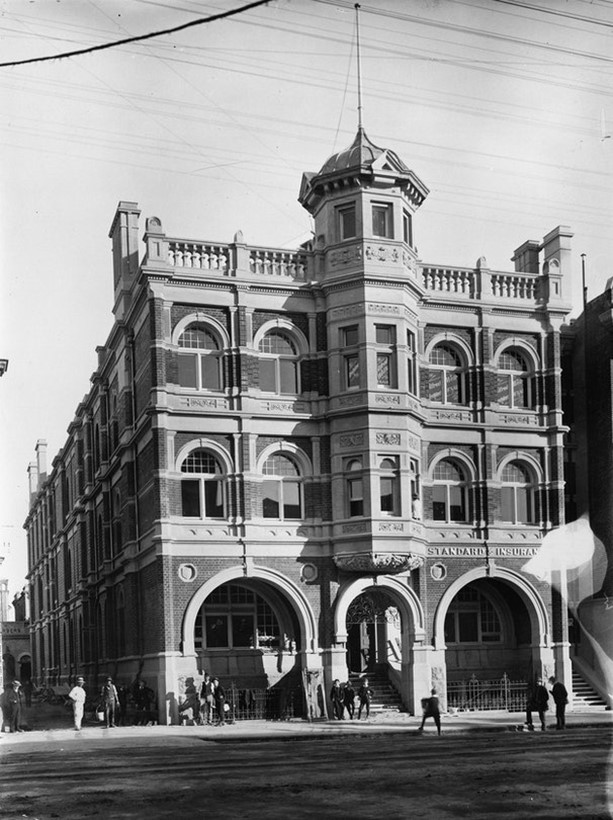Sheep and wool
Since the start of the SA colony, the wool and sheep meat sectors have been key economic drivers for the state. The term “riding on the sheep’s back” is commonly used to describe the importance of the industry.
The colony’s wool industry dates from 1836, when the South Australian Co. imported pure merinos from the German region of Saxony. By 1840, it was sufficiently established for the first wool auction to be held in Adelaide. Further auctions were conducted intermittently until 1870, then regularly for over a century, with wool stored in warehouses at Port Adelaide. By the 1940s and through to the 1970s, these wool stores were run by five stock and station agents:
- Dalgety and Co.
- Bennett and Fisher Ltd.
- Elder Smith and Co.
- Goldsbrough Mort and Co.
- Southern Farmers Cooperative.
Wool remained a leading export earner until the collapse of the reserve price scheme in 1991. The industry was relatively unregulated until the passing of the Wool Industry Act 1962 and the introduction of the reserve price scheme in 1970.
On the other hand, the meat sector was highly regulated, initially in the establishment of local abattoirs to supply meat to the community. Differentiation was clear in the rules for the large export abattoirs and those supplying meat for domestic consumption. More recently, the focus has been on food safety.
Australian sheep numbers peaked at around 180 million in the 1970s, with around 20 million in SA. Twenty years later, the national flock numbered 170 million, and has since fallen to around 74 million (2022).
The live sheep trade was established in the 1980s, providing returns for older sheep which had previously been sold for rendering. The export of lamb products has since grown into a significant sector of the sheep industry.
The Department of Agriculture played a major role in the development of the sheep industry with projects in the areas of pest and disease management, genetic improvement and reproductive efficiency, security and utilisation of feed supply, nutrition, animal welfare, and delivery of technology services to producers.
The following links provide useful information about the sheep and wool industry:
- Meat Hygiene in South Australia
- Vet Lab: From Private Patronage to Private Enterprise
- Livestock Program
- Legislation
 Phases in the Development of the Australian Sheep Industry
Phases in the Development of the Australian Sheep Industry
Written in 1979 by the Department of Agriculture’s Principal Sheep Officer, Brian Jefferies, this overview details key phases in the development of the Australian sheep industry since the early 1800s.
The document covers the industry objectives of increasing productivity and export performance for the global marketplace.
Phases in the Development of the Australian Sheep Industry ()
Wool, Woolclassing and Wool Marketing: A South Australian History
This document traces the response to global changes in wool production and marketing, in terms of classing wool to meet market requirements.
It describes the training provided to wool classers and the marketing arrangements for wool produced in South Australia, from the commencement of the colony to the present day.
Wool, Woolclassing and Wool Marketing: A South Australian History ()
